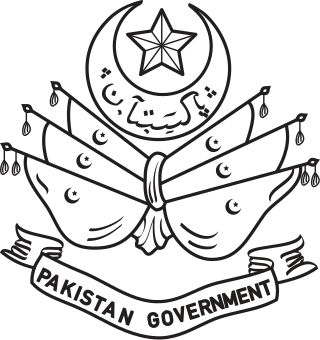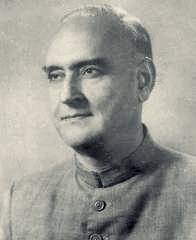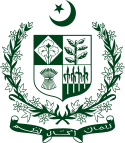
The Constitution of Pakistan, also known as the 1973 Constitution, is the supreme law of Pakistan. The document guides Pakistan's law, political culture, and system. It sets out the state's outline, the fundamental rights of the population, the state's law and orders, and also the structure and establishment of the institutions and the armed forces. Drafted by the government of Zulfikar Ali Bhutto, with additional assistance from the country's opposition parties, it was unanimously approved by the 5th Parliament on 10 April and ratified on 14 August 1973. The first three chapters establish the rules, mandate, and separate powers of the three branches of the government: a bicameral legislature; an executive branch governed by the Prime Minister as chief executive; and an apex federal judiciary headed by Supreme Court. The Constitution designates the President of Pakistan as a ceremonial Head of State who is to represent the unity of the state. The first six articles of the constitution outline the political system as a federal parliamentary republic system; as well as Islam as its state religion. The Constitution also encapsulates provisions stipulating the legal system's compliance with Islamic injunctions contained in the Quran and Sunnah.

Liaquat Ali Khan was a Pakistani lawyer, politician and statesman who served as the first prime minister of Pakistan from 1947 until his assassination in 1951. He was as pivotal to the consolidation of Pakistan as the Quaid-i-Azam, Muhammad Ali Jinnah, was central to the creation of Pakistan. He was one of the leading figures of the Pakistan Movement and is revered as Quaid-e-Millat and later on as "Shaheed e Millat".

The Parliament of Pakistan is the supreme legislative body of the Islamic Republic of Pakistan. It is a bicameral federal legislature, composed of the President of Pakistan and two houses: the Senate and the National Assembly. The president, as head of the legislature, has the power to summon or prorogue either house of the Parliament. The president can dissolve the National Assembly, only on the Prime Minister's advice.

The Bengali language movement was a political movement in East Bengal in 1952, advocating the recognition of the Bengali language as a co-lingua franca of the then-Dominion of Pakistan to allow its use in government affairs, the continuation of its use as a medium of education, its use in media, currency and stamps, and to maintain its writing in the Bengali alphabet / Bengali script

The Constituent Assembly of Pakistan was established in August 1947 to frame a constitution for Pakistan. It also served as its first interim parliament. It was dissolved by the Governor-General of Pakistan in 1958.

Jamiat Ulema-e-Islam is a Deobandi Sunni Muslim organization that was founded on 26 October 1945 by Shabbir Ahmad Usmani as a pro-Pakistan offshoot of the Jamiat Ulema-e-Hind (JUH). It has run candidates for office in Pakistani provincial and national elections, and splintered into several groups in 1980, 2007, and 2020.

The Lahore Resolution, also called the Pakistan Resolution, was a formal political statement adopted by the All-India Muslim League on the occasion of its three-day general session in Lahore, Punjab, from 22 to 24 March 1940, calling for a separate homeland for the Muslims of British India.
The Objectives Resolution was adopted by the Constituent Assembly of Pakistan on March 12, 1949. The resolution proclaimed that the future constitution of Pakistan would not be modeled entirely on a European pattern, but on the ideology and democratic faith of Islam. The resolution, in its entirety, has been made part of the Constitution of Pakistan under Article 2A
Pakistan has several official national symbols, including a flag, an emblem, an anthem, a memorial tower as well as several national heroes. The symbols were adopted at various stages in the existence of Pakistan and there are various rules and regulations governing their definition or use. The oldest symbol is the Lahore Resolution, adopted by the All India Muslim League on 23 March 1940, and which presented the official demand for the creation of a separate country for the Muslims of India. The Minar-e-Pakistan memorial tower which was built in 1968 on the site where the Lahore Resolution was passed. The national flag was adopted just before independence was achieved on 14 August 1947. The national anthem and the state emblem were each adopted in 1954. There are also several other symbols including the national animal, bird, flower and tree.

The history of East Bengal and East Pakistan from 1947 to 1971 covers the period of Bangladesh's history between its independence as a part of Pakistan from British colonial rule in 1947 to its independence from Pakistan in 1971.
The Constitution of 1956 was the fundamental law of Pakistan from March 1956 until the 1958 Pakistani coup d'état. It was the first constitution adopted by independent Pakistan. There were 234 articles, 13 parts and 6 schedules.
The Constitution of 1962 was the fundamental law of Republic of Pakistan from 8 June 1962 until martial law was declared in 25 March 1969. It was abrogated on 25 March 1969 by President Yahya Khan.

Jamiat Ulema-e-Islam Pakistan also known the Jamiat Ulema-e-Islam or simply as Jamiat Ulema-e-Islam (F)(Urdu: جمیعت علماءِ اسلام (ف); lit. 'Assembly of Islamic Clerics (Fazal-ur-Rehman)'; abbr.JUI (F) is an Islamic fundamentalist political party in Pakistan. Established as the Jamiat Ulema-e-Islam in 1945, it is the result of a factional split in 1988, F standing for the name of its leader, Fazal-ur-Rehman.

Sardar Amir Azam was a prominent Pakistani politician and businessman, widely regarded as a pioneer of low-cost housing in Pakistan. He began his political career in 1951 as a (MCA) in Pakistan’s first government, led by Liaquat Ali Khan. Over the years, he played a key role in successive Pakistani governments, serving multiple times as Minister of State and Federal Minister. Renowned for his ability to manage multiple portfolios simultaneously, Sardar Amir Azam left a lasting legacy in Pakistan’s political and economic landscape. He was laid to rest in his ancestral graveyard at Garhi Afghanan, near Taxila.

Mahmud Husain Khan was a Pakistani historian, educationist, and politician, known for his role in the Pakistan Movement, and for pioneering the study of social sciences. He served as Minister for Kashmir Affairs from 1951 to 1953 and Minister for Education in 1953, as well as minister of state in Pakistan's first cabinet under Prime Minister Liaquat Ali Khan.

Mahmud Ali was a progressive leftist Pakistani politician known for his agrarian politics. He was part of the Freedom Movement and played an important role during the Sylhet referendum which led to its merger with East Bengal. As member of Pakistan's Second Constituent Assembly he demanded the recognition of Bengali as one of the national languages of Pakistan and advocated the cause through his newspaper, the Nao Belal. He strongly opposed the 'One Unit' scheme and voted against the merger in 1956. After the dissolution of the assembly and abrogation of the 1956 Constitution he worked towards the restoration of provinces and a parliamentary form of government based on adult franchise.

Sardar Asad Ullah Jan Khan was a Pakistani Pakhtun politician from Kulachi, who represented North-West Frontier Province in the Constituent Assembly of Pakistan. Chieftain of the Gandapur tribal segment, Khan commanded influence in the society; besides, he was a local land magnate.
Sheikh Karamat Ali was a Pakistani Muslim League politician from Punjab, Pakistan.

The Liaquat Ali Khan government, commonly abbreviated as the L.A Khan government or Ali Khan administration was the first government and cabinet of Pakistan which ruled from 1947 to 1951, and was led by Liaquat Ali Khan.
















